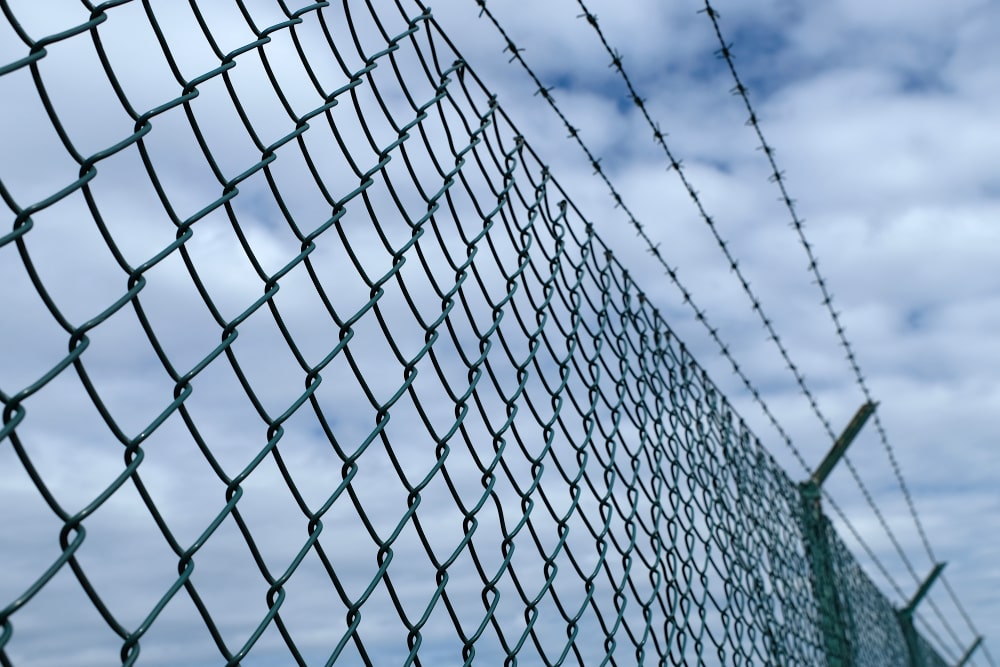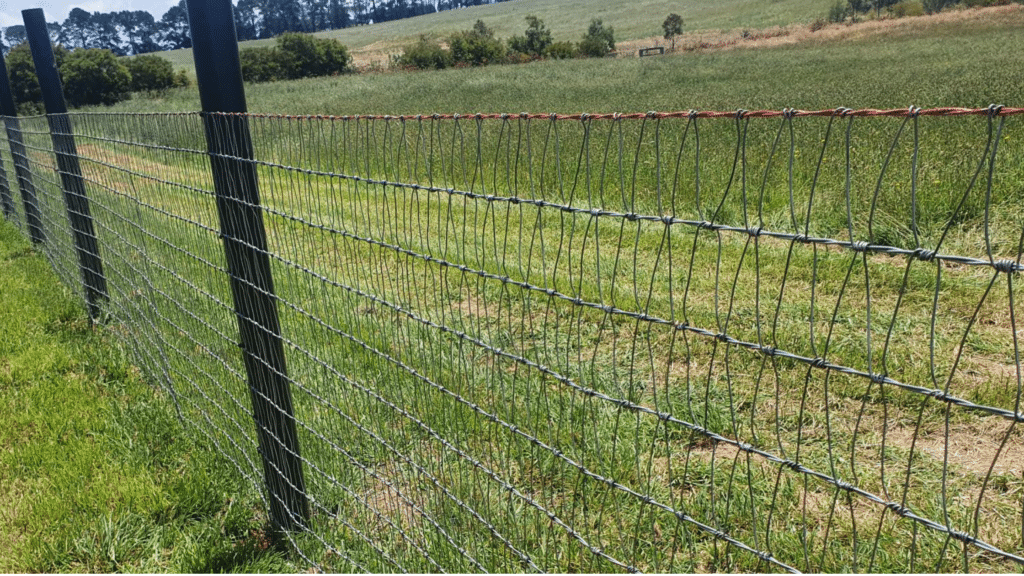Top 5 Differences Between Mesh Fencing and Scaffold Mesh
What are Mesh Fencing and Scaffold Mesh?
Mesh fencing and scaffold mesh are both high-density polyethylene (HDPE) products used extensively across construction and industrial sites, yet they serve fundamentally different purposes. Mesh fencing creates temporary perimeter barriers around construction sites, providing security, privacy, and dust suppression. Scaffold mesh, by contrast, wraps around scaffolding structures to protect workers and the public from falling debris whilst offering weather shielding.
Understanding the Top 5 Differences Between Mesh fencing and scaffold mesh is essential for construction site safety and project efficiency. Selecting the wrong product can compromise worker protection, fail regulatory compliance checks, or result in premature material failure requiring costly replacements.
Both materials share a common HDPE base with reinforced weaving patterns, which often causes confusion when specifying products. The critical distinction lies in their engineered features:
- Mesh fencing focuses on site perimeter control and visual screening
- Scaffold mesh prioritises worker safety and debris containment at height
Construction managers who grasp these differences can make informed purchasing decisions that align with specific project requirements. The wrong choice doesn’t just waste budget—it potentially exposes sites to safety hazards and regulatory penalties. Each product type has been developed with distinct performance characteristics tailored to its intended application, from UV stabilisation levels to attachment mechanisms and wind filtration properties.
1. What Are the Primary Applications and Purposes of Mesh Fencing and Scaffold Mesh?
Mesh fencing applications centre on site perimeter management, whilst scaffold mesh usage focuses on vertical safety barriers around elevated work platforms.
Applications and Purposes of Mesh Fencing
Mesh fencing serves construction sites, events, and industrial facilities by establishing secure boundaries. The material acts as a physical barrier preventing unauthorised access whilst reducing dust migration beyond site limits. Privacy screening represents another key function, blocking visibility into work areas where confidential projects or sensitive operations occur. Sites in residential areas particularly benefit from this visual barrier, maintaining community relations by concealing construction activities.
Applications and Purposes of Scaffold Mesh
Scaffold mesh operates within completely different parameters. Attached directly to scaffolding structures, it creates protective enclosures around buildings under renovation or construction. The primary function involves catching falling tools, materials, and debris that could injure workers below or pedestrians passing the site. Weather shielding adds another dimension—the mesh reduces wind exposure for workers at height whilst providing shelter from rain and snow. This protection enables work to continue in conditions that would otherwise halt operations, directly impacting project timelines and worker comfort.
2. How Do the Materials and Construction of Mesh Fencing and Scaffold Mesh Differ?
Both products share HDPE mesh material as their foundation, utilizing high-density polyethylene with reinforced weaving patterns for strength and flexibility. The similarity ends at the base material.
Scaffold Mesh Construction Features
Scaffold mesh features distinctly engineered construction elements:
- Reinforced edges running along all four sides prevent fraying and tearing under tension
- Scaffold mesh eyelets positioned at regular intervals (typically every 500mm) enable secure attachment to scaffolding frameworks
- Heavy-duty stitching around perimeter edges withstands repeated installation and removal cycles
- Brass or aluminium eyelets resist corrosion in wet conditions
Mesh Fencing Construction Features
Mesh fencing employs simpler construction suited to its application:
- Buttonhole eyelets concentrated at top and bottom edges for fence attachment
- Lighter edge reinforcement adequate for vertical hanging applications
- Standard weave density balances visibility control with material economy
The eyelet configuration represents the most visible difference—scaffold mesh’s regularly spaced attachment points accommodate horizontal and vertical scaffolding tubes, whilst fence mesh’s top-bottom eyelet placement aligns with chain link fence installation requirements.
3. In What Ways Do Durability and UV Protection Vary Between the Two Mesh Types?
UV stabilization scaffold mesh receives specialized treatment during manufacturing that significantly extends its operational lifespan to 18-24 months, even under constant sunlight exposure. This makes it ideal for long-term construction projects where material replacement would disrupt workflow and increase costs.

The mesh durability comparison reveals stark differences in UV protection standards. Scaffold mesh incorporates UV stabilizers directly into the HDPE polymer during production, creating molecular-level protection against degradation. Without this treatment, mesh typically fails within 6-12 months as UV rays break down the material structure, causing brittleness and tears.
Fence mesh UV protection varies considerably by grade and manufacturer specifications:
- Standard grade – basic UV resistance suitable for short-term applications (3-6 months)
- Premium grade – enhanced UV stabilizers for extended perimeter security (12-18 months)
- Heavy-duty grade – maximum UV protection for harsh environmental conditions
Understanding these Top 5 Differences Between Mesh Fencing and Scaffold Mesh helps project managers budget for replacement cycles and select appropriate grades based on project duration and exposure levels.
4. How Do Wind Filtration and Visibility Characteristics Contrast Between Mesh Fencing and Scaffold Mesh?
Wind filtration scaffold mesh achieves approximately 35% wind filtration whilst blocking around 30% of visibility. This precise engineering prevents excessive wind loads on scaffolding structures that could compromise stability, yet maintains enough transparency for supervisors to monitor work activities and workers to remain aware of their surroundings. The balanced design becomes critical on high-rise projects where wind forces intensify with elevation.
Visibility fence mesh prioritises site-specific requirements rather than standardised ratios. Open weave variants allow maximum airflow—ideal for high-wind coastal locations where solid barriers would create dangerous pressure points. Premium banner mesh features tighter weaving patterns that deliver superior privacy and dust containment, often serving dual purposes as branded advertising surfaces. Sites near residential areas typically specify denser weaves to minimise visual intrusion, whilst industrial zones may opt for lighter meshes that reduce material costs without sacrificing perimeter definition.
The structural demands of scaffolding necessitate scaffold mesh’s consistent specifications, whereas fence mesh adapts to diverse perimeter control scenarios. These specific requirements highlight the importance of selecting the appropriate mesh type based on the unique needs of each project.
5. What Are the Installation Compatibility Differences Between Mesh Fencing and Scaffold Mesh?
Scaffold compatibility determines which mesh type suits your structure. Scaffold mesh attaches directly to scaffolding frameworks through regularly spaced eyelets along reinforced edges, using cable ties, bungee cords, or hooks. This design works seamlessly with:
- Tube and coupler scaffolds – traditional adjustable systems
- System scaffolds – modular pre-engineered frameworks
- Mobile towers – portable access equipment
The eyelet spacing typically matches standard scaffolding dimensions, allowing quick vertical installation across multiple levels without custom modifications.
Mesh fencing follows a different approach for chain link fence installation. Buttonhole eyelets positioned at top and bottom edges enable horizontal attachment to temporary fence panels using cable ties or rope. The mesh stretches between fence posts rather than wrapping around vertical structures. This horizontal orientation suits perimeter applications where the fence line provides the support framework, not the building itself. The installation method reflects each product’s core purpose – scaffold mesh integrates with vertical work platforms whilst fence mesh secures ground-level boundaries.

Which One Should You Choose for Your Project?
Choosing between scaffold and fence mesh depends entirely on your project’s primary function and location requirements.
Select scaffold mesh when:
- Installing safety barriers on elevated work platforms
- Protecting workers and pedestrians from falling debris
- Requiring UV-stabilised material for 18-24 month durability
- Needing secure attachment to tube and coupler or system scaffolds
- Working on multi-storey building projects with strict safety regulations
Choose fence mesh when:
- Establishing perimeter security around ground-level construction sites
- Creating privacy screens or visual barriers for events
- Controlling dust dispersion at site boundaries
- Requiring quick installation on chain link fencing systems
- Needing flexible weave options for varying wind conditions
The top 5 differences between mesh fencing and scaffold mesh clarify that these products serve complementary rather than interchangeable roles. Scaffold mesh prioritises worker safety and structural attachment, whilst fence mesh focuses on site perimeter control and accessibility.
Consider your project timeline: scaffold mesh’s extended UV protection justifies higher costs for long-term projects, whereas fence mesh offers economical solutions for shorter-duration sites or temporary events.
Still uncertain which product suits your needs? Contact our technical team for project-specific recommendations based on your site conditions, duration, and safety requirements. We’ll help you specify the right mesh solution for optimal performance and compliance.
FAQs on Mesh Fencing vs. Scaffold Mesh
Mesh fencing is designed for ground-level perimeter control, offering privacy and security around a site. Scaffold mesh, on the other hand, is used on elevated scaffolding structures to contain debris and protect workers and the public from falling materials.
No. Each mesh type is engineered for specific functions—scaffold mesh must meet higher strength and safety standards for height applications, while fence mesh is lighter and designed for ground-level use. Using them interchangeably can lead to safety and compliance issues.
Both are typically made from high-density polyethylene (HDPE), a durable and flexible plastic. However, scaffold mesh includes reinforced edges, corrosion-resistant eyelets, and UV stabilisers to withstand greater tension and environmental stress.
Durability depends on UV treatment and exposure.
Scaffold mesh: 18–24 months (due to advanced UV stabilisation).
Mesh fencing: 3–18 months, depending on grade (standard, premium, or heavy-duty).
Scaffold mesh allows around 35% wind filtration and 30% visibility, balancing safety and stability. Fence mesh offers custom weave densities, allowing you to choose between higher privacy (tight weave) or better airflow (open weave).
Scaffold mesh: Attaches vertically to scaffolding using reinforced eyelets spaced every 500mm with cable ties or bungee cords.
Mesh fencing: Installed horizontally on temporary fence panels with buttonhole eyelets along the top and bottom edges.

